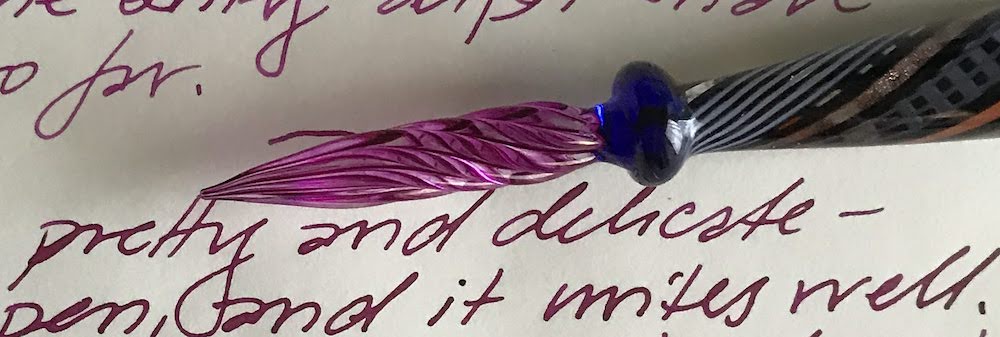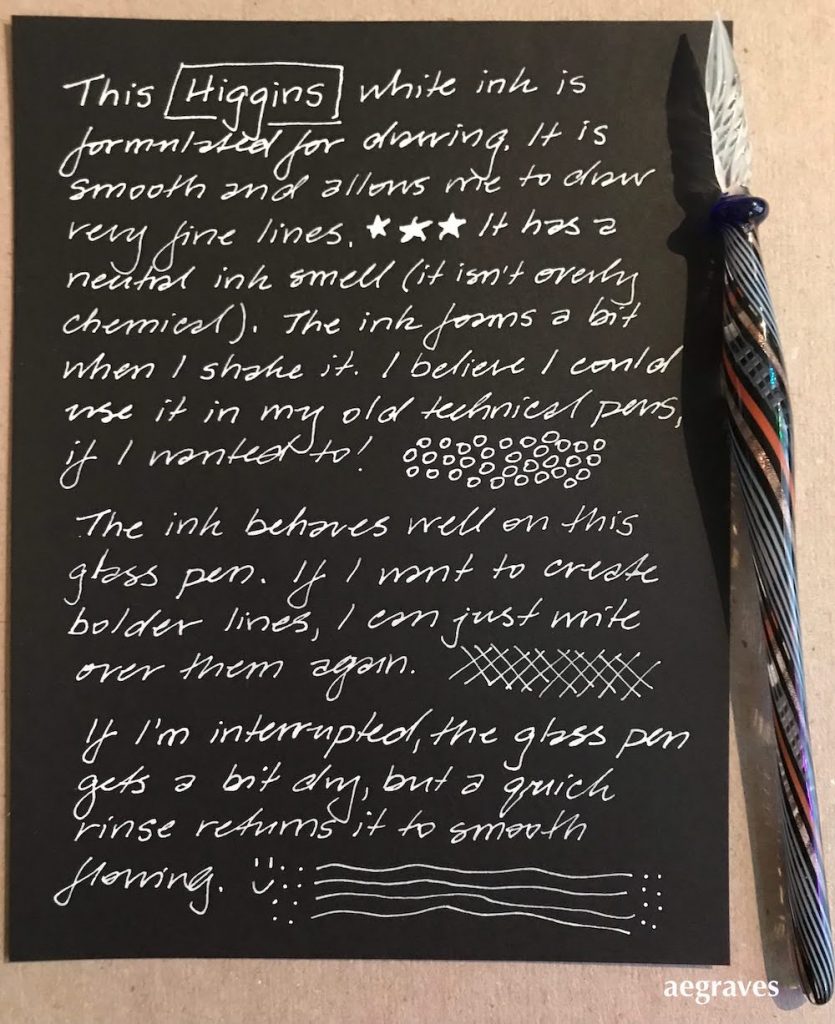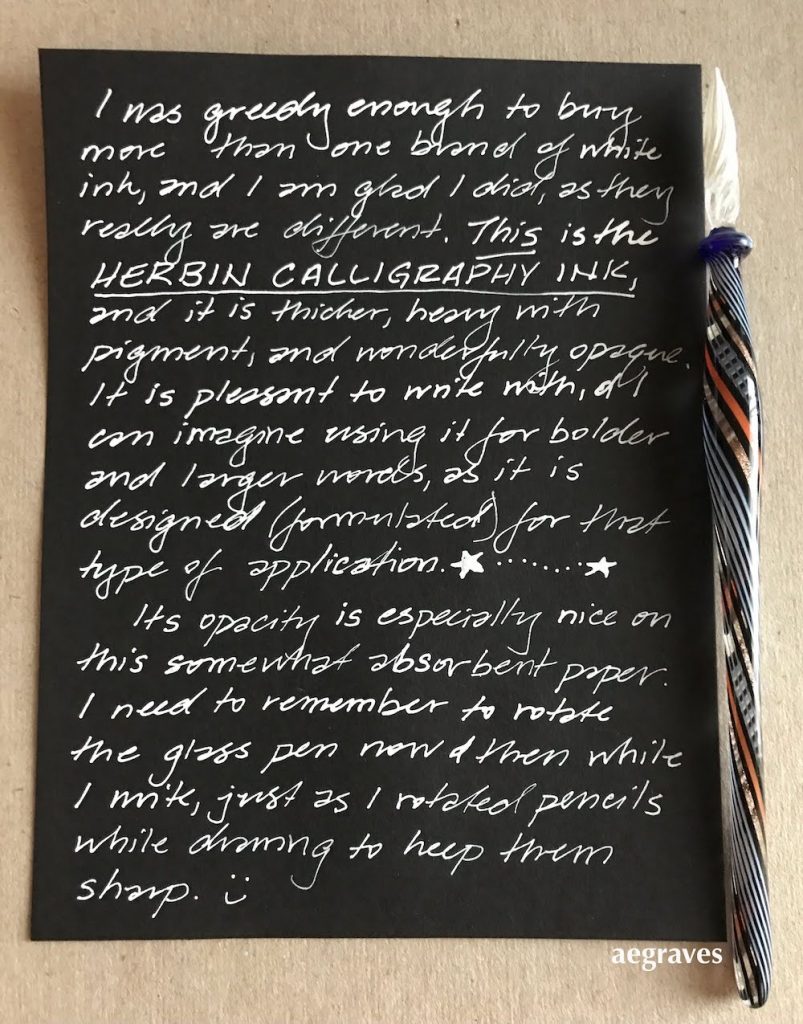
I write. A LOT. Years ago, I was distressed over how many disposable pens I could go through in a month (too many), and looked for environmentally responsible options. I switched to refillable cartridges/tubes for work and travel, and fountain pens that refill with bottled ink for home. Most of my writing now relies on no-waste refills!
The fountain pens are FANTASTIC and surprisingly ergonomic: I chose pens that are larger and easier to hold than disposable pens, and which glide over smooth papers, all without the strain of pressing down hard that normal paste-ink rollerball pens require.
Something was missing, though: nothing could beat the Uniball Signo white gel ink pens. I use them to write on black paper; I use them to write in photo albums; I use them to draw on watercolors. However, they are disposable, no refills are available, I consume them quickly, AND they dry up fast, so that efforts to stock up on them backfire. (The only thing BETTER is the Uniball Signo silver pen, but that only solves the drying up problem, and doesn’t work for all of my art needs.)
I tried to emulate my solution for replacing other pens: I purchased bottles of white ink and put them into fountain pens. Good opaque white inks clog up the fine feed, however, and I’ve had to clean the same pen every few pages (!!) while writing a long letter.

Long story short: I bought a glass pen. Yes, a pen made of glass. Aside from the fact that I will OBVIOUSLY let it roll off a table and break eventually, it seems perfect: it has no moving parts, is easy to clean, and holds ink on its exterior grooves. Conveniently, it works with BOTH the thicker and thinner inks I’m testing it with.

There is an adjustment to make: you need to dip the pen to add ink every paragraph or two. It’s manageable with practice.
Both of my chosen inks flow really well with it. The pen is easy to write with, even with my healthy fear of accidentally snapping it in two. (I have snapped metal garlic presses in half more than once, so I’m a bit sensitive.) It doesn’t glide AS smoothly as a fountain pen would, so it makes a little bit of noise on textured paper, but it glides well enough to write naturally when loaded with ink.

The Higgins ink lies very flat; the Herbin ink can be built up slightly, and is thicker and more opaque, but to my surprise, I can write finely with either one. (You can see the difference in thickness in opacity just by looking at the pen tip in the photos above.)
So: I have a solution to my disposable white gel ink pen problem! A FANCY solution. I’m delighted. I can now heartily recommend either or both of these inks on smooth, relatively non-absorbent (non-feathering) papers.
